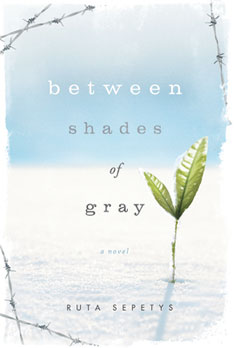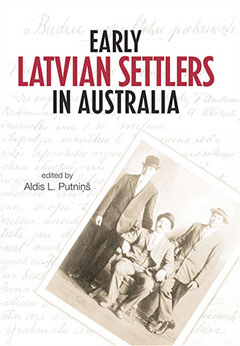
When I visited Latvia this spring, where the novel Latvieši ir visur was still a bestseller, I heard that it was something of a parlor game to try guessing the real name behind the author’s pseudonym “Otto Ozols.”
The supposedly autobiographical story is an entertaining series of international escapades, and an easy read— even if, like me, you were such a lazy little beast in Latvian school that reading literature is now a painfully slow slog.
According to the book’s Facebook page, an English translation is already in the works, and the author’s straightforward, economical style should survive the translation intact.
A brief synopsis: the young narrator, Ozols, defects to the West in 1990 and settles in Berlin, where he meets and begins working for Rihards, an expatriate Latvian businessman with a history (Ozols calls him his “patrons”). He moves furniture for households relocating internationally, then becomes a courier, and in this capacity meets many illustrious persons whose correspondence is too sensitive to entrust to a normal delivery service. These encounters give rise to conversations and reflections voiced by the characters about politics, history, various national cultures, and the remarkable places that Latvians keep popping up—which gives the book its title.
The catalog of Latvians everywhere includes illustrious emigrés and the early Bolshevik all-stars murdered by Josef Stalin, but also extends to the notion that Latvians (notably Boriss Pugo!) were instrumental in the well-planned dismantling of the Soviet Union. Although the book’s cover cites reviews that lead one to expect a “Chicken Soup for the Self-Hating Latvian Soul,” Ozols is sophisticated and jaded enough to avoid simply rooting for the home team.
Latvieši ir visur is not really a globālais trillers (global thriller) as the cover claims, but it is global in the sense that the author has a feel for viewing the world with Soviet Latvian, post-Soviet Latvian, Western-world Latvian, and non-Latvian perspectives. He writes without fear or walls of personal animosity or dogma, and brings the farthest-flung cultural references into play. Considering how Latvians can a) get their backs up about the pettiest, stupidest things, and b) internalize the assumptions of whatever culture they grew up in (for example, white American suburbanite), this is a real accomplishment. Ozols gives communism, capitalism, Russians, Jews, gays, Western Europeans, and Americans fair (if ironic) treatment and the benefit of the doubt, and his book is all the more enjoyable for it. He does fire a shot across the bow at Latvia’s arch-enemy, Sweden. Why Sweden? Read the book, or Google-search economist Michael Hudson’s (pro-Harmony Center, cue ominous music) articles.
Interestingly, Ozols expresses no concern about the unassimilated Soviet-era settlers in Latvia, whom many Latvians who dwell on Latvianness fear and distrust as a possible fifth column for Moscow. Indeed, he has a soft spot for Russians, though he has no illusions about the Russian state. He admires the Scandinavians for their balance of freedom with social solidarity, though he has harsh words for their bankers and politicians, which he extends to rich elites of all countries—particularly Latvia. A businessman whom the narrator meets on a flight to Boston encapsulates, hilariously, everything that Ozols finds wrong with current-day speculative capitalism, and his term for the common people who have to pay for it all—penguins—is a brick hurled at former Prime Minister Ivars Godmanis (whose pingvīni remark earned him great scorn) and by extension the corrupt Latvian political and bizness establishment of the past 20 years. Anyone who has been following the current government standoff needs no elaboration on this topic.
The one area where Ozols shies away from possible political incorrectness is in writing about the Jews, whether in general or in discussing how Jewish and Latvian history has been interrelated. Given the bitter history and mutual recriminations over Nazi and Soviet atrocities, and how badly and crudely some Latvians have written about Jewish topics, treading carefully is a sensible approach.
As a world-historical, geopolitical vision, Latvieši ir visur is compelling and almost believable, much like the Soviet Union. On the details of daily life, though, the book founders, also like the Soviet Union: the narrator’s gorgeous girlfriend leaves him for her gorgeous lipstick-lesbian lover, and, consoling himself with a drunken weekend of skiing the French Alps, he meets the even more gorgeous California girl whom he lives with in Hamburg for the rest of the 1990s. Well, if you’re going to write magical realism, you might as well throw in some good sex for yourself. That’s my motto, anyway.
Ozols’ treatment of America and Americans is, like other topics, nuanced and neither fawning nor demonizing. Conspicuous by their absence are the trimda (exile) Latvians as a group: the one American Latvian in the story is the Manhattanite Jāņsons, a well-connected, urbane, down-to-earth artist. As an American Latvian I was relieved that Ozols did not use his satirical filet knives on us, given how many trimda gatherings, in my experience, have been festivals of false consciousness. Perhaps he is saving that for the sequel.
The story’s believability founders as well on details such as American names. The narrator calls his California girl Lisa, because her real name reminds him too much of a tiresome city he travels to for his work:
“Vecāki esot turīgi viesnīcas speciālisti… savu meitu viņi nosaukuši Francijas galvaspilsētas vārdā.”
Rich hotel family, daughter named Paris: if plausibility is a boat, this is a serious leak. And the fellow whom she finally leaves him for, as more suitable husband material, is named William Jefferson. Hmm, wasn’t there a William Jefferson Someone with a girlfriend from L.A. in the news around that time?
Whatever its flaws, Latvieši ir visur is worth reading, especially for those who avoid tackling books in Latvian—and there’s no shame in that. After all, it’s been three generations now that trimda Latvians have been holding onto the language as best we can. The author presents an easy target for critics to swat at, not hiding behind ironic frames-within-frames (apart from the pseudonym), but swinging from a jungle vine, yelling, in leopard-print briefs. Yet, for an interesting, thought-provoking new book in Latvian that’s this much fun to read, we should be willing to forgive any literary sins. After all, we’ll always have Paris.
Details
Latvieši ir visur
Otto Ozols
Rīga: Atēna, 2010
ISBN 9789984344096
Where to buy
Purchase Latvieši ir visur from iTunes.
Note: Latvians Online receives a commission on purchases.





